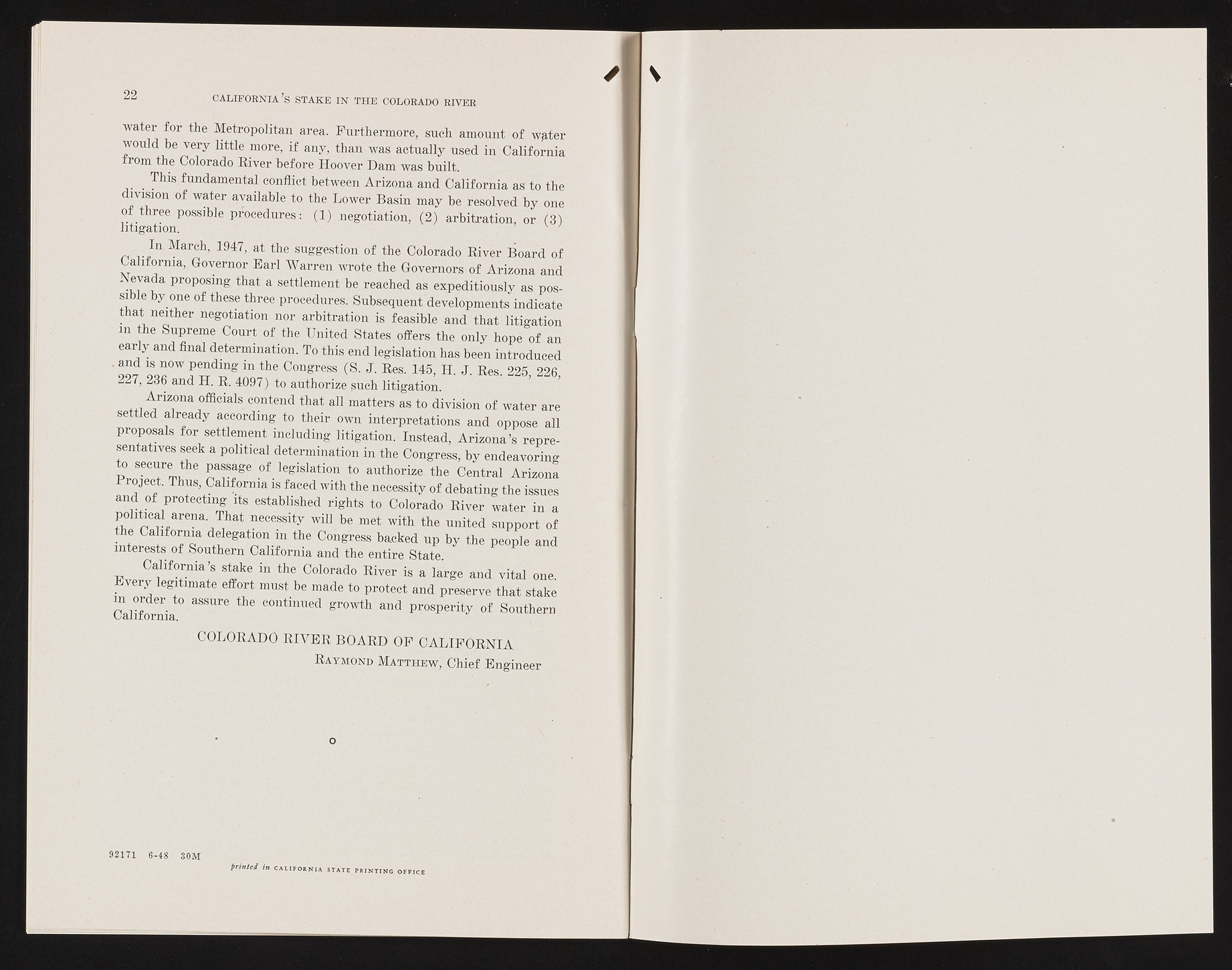Copyright & Fair-use Agreement
UNLV Special Collections provides copies of materials to facilitate private study, scholarship, or research. Material not in the public domain may be used according to fair use of copyrighted materials as defined by copyright law. Please cite us.
Please note that UNLV may not own the copyright to these materials and cannot provide permission to publish or distribute materials when UNLV is not the copyright holder. The user is solely responsible for determining the copyright status of materials and obtaining permission to use material from the copyright holder and for determining whether any permissions relating to any other rights are necessary for the intended use, and for obtaining all required permissions beyond that allowed by fair use.
Read more about our reproduction and use policy.
I agree.Information
Digital ID
Permalink
Details
Member of
More Info
Rights
Digital Provenance
Publisher
Transcription
22 Ca l i f o r n i a ' s s t a k e i n t h e Co l o r a d o r i v e r water for the Metropolitan area. Furthermore, such amount of water would be very little more, if any, than was actually used in California from the Colorado River before Hoover Dam was built. This fundamental conflict between Arizona and California as to the division of water available to the Lower Basin may be resolved by one of three possible procedures: (1) negotiation, (2) arbitration, or (3) litigation. In March, 1947, at the suggestion' of the Colorado River Board of California, Governor Earl Warren wrote the Governorsof Arizona and ? I B ProP°s*n£ B a settlement be reached as expeditiously as possible by one of these three procedures. Subsequent developments indicate that neither negotiation nor arbitration is feasible and that litigation m the Supreme Court of the United States offers the only hope of an early and final determination. To this end legislation has been introduced '997 m m m in the c °ngress B j - Res- u 227, 236 and H. R. 4 0 9 3 to authorize such litigatio5 n> .h - j - B 225,226, Arizona officials c o d tend that all matters as to division of water are settled already according to their own interpretations and oppose all proposals for settlement including litigation. Instead, Arizona’s representatives seek a political determination in the Congress, by endeavoring to secure the passage of legislation to authorize the Central Arizona roject. Thus, California is faced with the necessity of debating the issues and of protecting its established rights to Colorado River water in a pohtical arena. That necessity will be met with the united support of the California delegation in the Congress backed up by the people and interests of Southern California and the entire State. California^ stake in the Colorado River is a large and vital one. Every legitimate effort must be made to protect and preserve that stake California*0 aSSUr6 ^ C°ntmUed growth and Prosperity of Southern COLORADO RIVER BOARD OF CALIFORNIA R a y m o n d M a t t h e w , Chief Engineer o 92171 6-48 30M printed in Ca l i f o r n i a s t a t e p r i n t i n g o f f ic e

